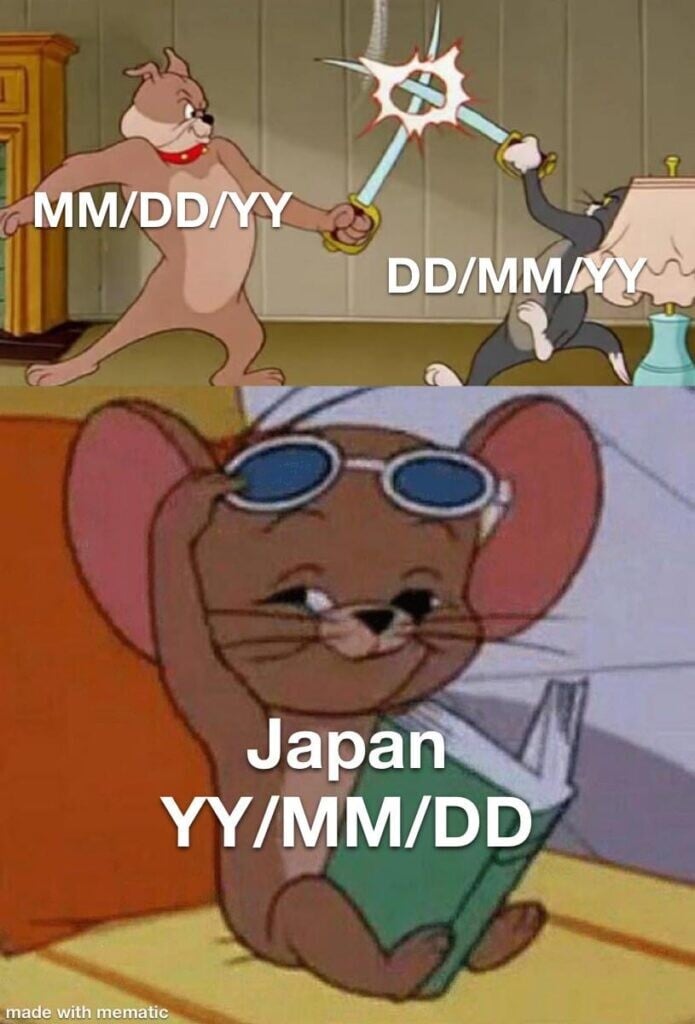this post was submitted on 22 Nov 2023
1040 points (95.9% liked)
Memes
45550 readers
1355 users here now
Rules:
- Be civil and nice.
- Try not to excessively repost, as a rule of thumb, wait at least 2 months to do it if you have to.
founded 5 years ago
MODERATORS
you are viewing a single comment's thread
view the rest of the comments
view the rest of the comments

If you use DD/MM/YYYY, dumb sorting algorithms will put all of the 1sts of every month together, all of the 2nds of every month together, etc. That doesn't seem very useful unless you're trying to identify monthly trends, which is fundamentally flawed as things like the number of days in the month or which day of the week a date falls on can significantly disrupt those trends.
With MM/DD/YY, the only issue is multiple years being grouped together. Which may be what you want, especially if the dates are indicating cumulative totals. Depending on the data structure, years are often sorted out separately anyways.
YYYY/MM/DD is definitely the best for sorting. However, the year is often the least important piece in data analysis. Because often the dataset is looking at either "this year" or "the last 12 months". So the user's eyes need to just ignore the first 5 characters, which is not very efficient.
If you're using a tool that knows days vs months vs years that can help, but you can run into compatibility issues when trying to move things around.
The ugly truth no one wants to admit on these conversations is that these formats are tools. Some are better suited to certain jobs than others.